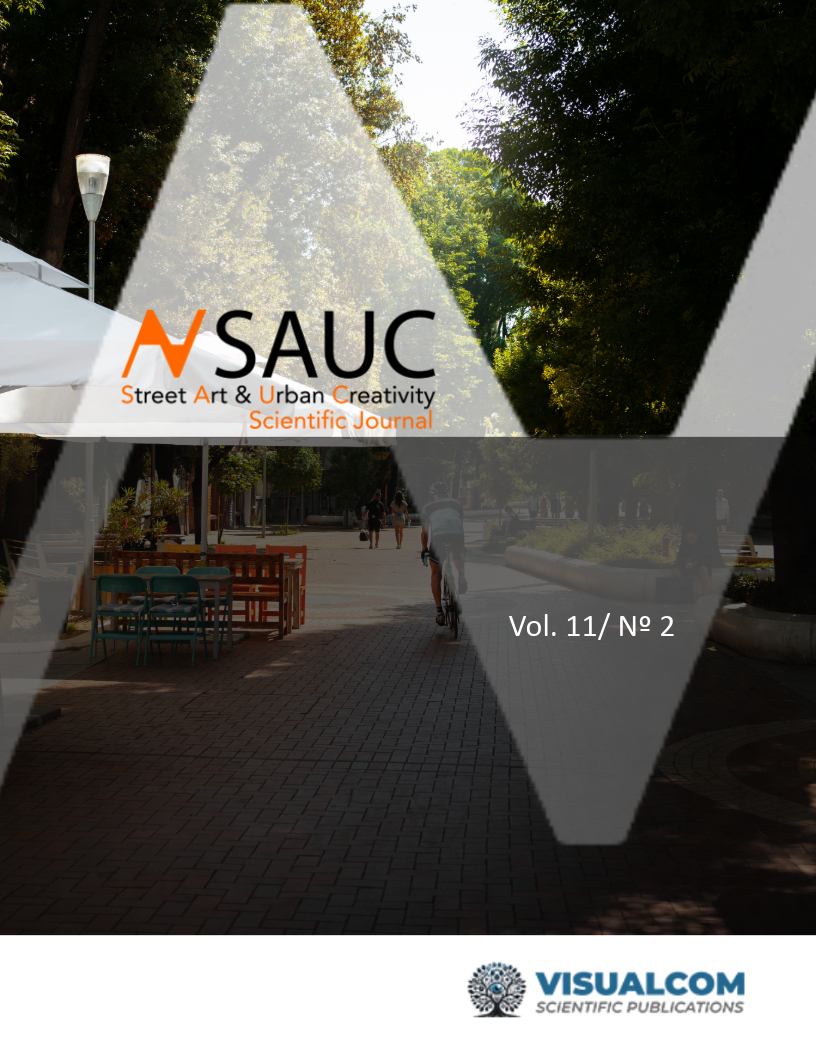Urban parks as creative centers: promoting art and imagination
Innovation, Art and Technology: New Frontiers in Urban Spaces
DOI:
https://doi.org/10.62161/sauc.v11.5719Keywords:
Urban parks, Creative centers, Art workshops, Community engagement, Youth development, Imagination, Cultural revitalizacionAbstract
The proposal "Urban Parks as Creative Centers: Fostering Art and Imagination" aims to transform Bucaramanga's parks into creative learning spaces through the "Creative Train" program. This project offers free workshops for children, covering art, recycled crafts, music, theater, creative science, and technology such as 3D printing and simulators with augmented reality, encouraging their creativity. The workshops will take place in themed train carriages, providing an educational and fun environment. All workshops will be free to ensure inclusivity for all families. Additionally, partnerships with local educators, artists, and professionals will be established to enrich the activities. This project aims to revitalize the parks as cultural meeting spaces, improving the quality of life for children and strengthening Bucaramanga's social fabric, turning the parks into vibrant, lively places.
Downloads
Global Statistics ℹ️
|
318
Views
|
207
Downloads
|
|
525
Total
|
|
References
García, M., & Vivas, A. (2022). Espacios públicos y creatividad: Transformación social a través del arte. Ediciones Universitarias.
Pérez, L., & González, R. (2021). La importancia del arte en el desarrollo cognitivo de los niños. Revista de Psicología Infantil, 18(2), 45-60.
Sánchez, E. (2020). Urbanismo y revitalización de espacios públicos en América Latina. Fondo Editorial de Ciencias Sociales.
Torres, J. (2022). Creatividad y aprendizaje: Nuevas formas de enseñanza en contextos comunitarios. Editorial de la Innovación Educativa.
Gómez, P. & Lara, M. (2020). Desarrollo integral y creatividad en espacios urbanos. Ediciones del Desarrollo Social.
Rojas, E. (2019). Parques como centros de aprendizaje: Transformación cultural y social. Diario de la Cultura y el Urbanismo, 12(3),45-50.
Smith, A. (2021). Cultura y educación en parques públicos. Editorial Cultura Urbana.
Martínez, S., & Álvarez, R. (2018). Impacto de actividades intergeneracionales en la cohesión familiar. Revista de Psicología Social.
Instituto de Innovación Social. (2020). Impacto social de actividades culturales en comunidades urbanas. Instituto de Innovación Social.
Fernández, L., & Torres, M. (2022). Espacios creativos y cohesión social: Un análisis de caso. Revista de Innovación Social, 14(1), 22-35
Instituto de Investigación de Espacios Públicos. (2022). Cultura y creatividad en parques urbanos: Un estudio de caso. Revista de Espacios Públicos, 30(2), 45-60.
Pérez, L., & García, M. (2021). El papel de la creatividad en la revitalización de espacios públicos. Revista de Urbanismo y cultura, 10(1), 5-18
Smith, J. (2020). Urbanismo cultural: Revitalización de espacios públicos mediante el arte y la cultura.
López, P. (2019). Movilidad creativa: La innovación de talleres itinerantes. Cultura y Ciudadanía, 14(1), 78.
Martínez, A., & Torres, R. (2018). El impacto de la participación de artistas locales en proyectos comunitarios. Revista de Proyectos Comunitarios, 9(2), 56-72.
Ramírez, S. (2020). Colaboración y co-creación en proyectos culturales comunitarios. Revista de Gestión Cultural, 21(3), 45-58
Díaz, E. (2017). La co-creación en la planificación urbana: Implicaciones para el desarrollo de comunidades sostenibles. Planeamiento Urbano Contemporáneo, 5(1), 123-136.
Downloads
Published
How to Cite
Issue
Section
License
Copyright (c) 2025 Street Art & Urban Creativity

This work is licensed under a Creative Commons Attribution-NoDerivatives 4.0 International License.
Those authors who publish in this journal accept the following terms:
-
Authors retain copyright.
-
Authors transfer to the journal the right of first publication. The journal also owns the publishing rights.
-
All published contents are governed by an Attribution-NoDerivatives 4.0 International License.
Access the informative version and legal text of the license. By virtue of this, third parties are allowed to use what is published as long as they mention the authorship of the work and the first publication in this journal. If you transform the material, you may not distribute the modified work. -
Authors may make other independent and additional contractual arrangements for non-exclusive distribution of the version of the article published in this journal (e.g., inclusion in an institutional repository or publication in a book) as long as they clearly indicate that the work was first published in this journal.
- Authors are allowed and recommended to publish their work on the Internet (for example on institutional and personal websites), following the publication of, and referencing the journal, as this could lead to constructive exchanges and a more extensive and quick circulation of published works (see The Effect of Open Access).













